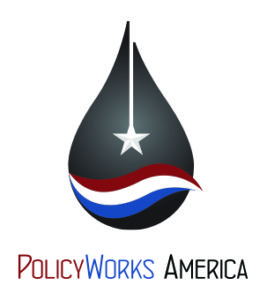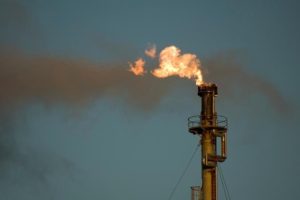Down and Dirty on Clean Air
This is part 1 of a 3-part series.
With Noble’s scalp hanging in EPA’s trophy case, the agency turned its sights on North Dakota Bakken shale producers. For a variety of political motives that state had a bullseye on its chest. North Dakota had risen from the backwaters of oil producing states to second behind only Texas. The absence of infrastructure in the state and the pell mell rush to develop resulted in a rise in flaring of the natural gas that accompanies most crude oil production.
A brief explanation – flaring of gas is necessary when pipelines and gas plants have yet to be built. Typically the quantities of gas flared are relatively small, and must be disposed of in some fashion as the crude is produced. Oil producers do not vent the gas, as it is illegal, but flaring or incinerating the gas produces negligible emissions. Once pipelines are built and gas plants are functioning, most oil companies lay natural gas gathering lines to the well as part of initial construction so that when it is completed the gas immediately is piped to the plant and then sold. These are “green” completions as all gas is captured.
Flaring was decried by the anti-oil crowd and deceptive satellite photos were published claiming the flaring in the state was as bright at night as New York City. Those photos were later proven to be faked. Despite the handwringing and apoplexy, North Dakota’s air remained compliant with national air quality standards. The state department of health worked closely with industry to ensure compliance and an evolving set of regulations that were/are strict but not punitive.
The full-scale assault on North Dakota’s oil producers began innocently enough. EPA sent an information request to a small privately held producer – we’ll call it Company S. The company operated on the Three Affiliated Tribes reservation so it was subject to primary jurisdiction of the EPA. The discussions were cordial at the outset, then took an ugly turn when EPA revealed that it had infrared camera images of Company S facilities leaking methane.
FLIR cameras provide two dimensional thermal imaging, but most importantly cannot provide quantities of methane “leakage” from oil and gas storage facilities. But as a basis for its claims against oil and gas producers, EPA claimed a formula – the Pickard formula – could determine quantities. Thus, these formulaic derivative “violations’ were the basis for EPA penalties against Company S of plus or minus $75 million. Of course, if the company agreed to negotiate with EPA, that amount could be substantially reduced. With the EPA backed by a battery of Department of Justice attorneys aligned against it, Company S agreed to negotiate.
About that time, EPA approached the North Dakota Department of Public Health to gain its cooperation in what would be an emissions data information gathering process on the state’s oil and gas facilities. It requested the state enter into a confidentiality agreement so that findings could be discussed freely prior to making them public. The state agreed, seeing little downside to doing so.
EPA then turned its sights on a leading producer in the state, Company W. The company had acquired another smaller public entity, Company K. And when it did so, it requested the EPA allow a self-audit. Up to this point, such audits had been routine as they allowed the acquirer latitude to examine facilities in depth, report flaws to the EPA without penalty, and provide a remediation plan.
Company W requested a self-audit, and received no response. It asked again one month later, still silence. Six months after the acquisition, Company W again asked. The following day the request was denied and was immediately followed by a request for information on all facilities – essentially an identical request to that received by Company S.
The EPA had turned its FLIR cameras on Company W facilities, and by applying its Pickard formula, found the company to be a gross emitter. It too was invited in to hear the EPA offer, which was to negotiate or face a lawsuit. It is critical to note that the facilities of both Company S and W were state-of-the-art, relatively new and met prevailing industry standards. They were not outliers, nor shortcutted in any way, other than one tank battery on acreage acquired by Company W had a single design flaw needing remediation, but was not a critical emitter.
Company W met with EPA and the Department of Justice attorneys and was told it could negotiate to fines and remediation on a level levied against Noble, about $75 million or so. If it chose to not acquiesce, it would be sued by the federal government for penalties back to day one of the facilities construction. A TOTAL OF $2.8 BILLION!!! WHEN THE ATTORNEYS STATED THAT AMOUNT, THEY LAUGHED OUT LOUD.
Up next: The fight is on…
3 Responses to Down and Dirty on Clean Air
Leave a Reply
You must be logged in to post a comment.



[…] To read Part 1 of this series, please click here. […]
[…] This is part 2 of a 3-part series. Part 1 can be found here. […]
[…] his is part 2 of a 3-part series. Part 1 can be found here. […]